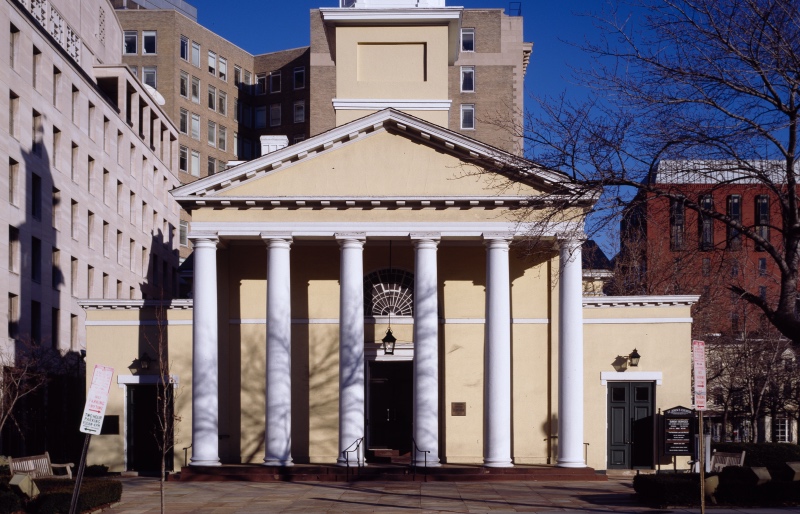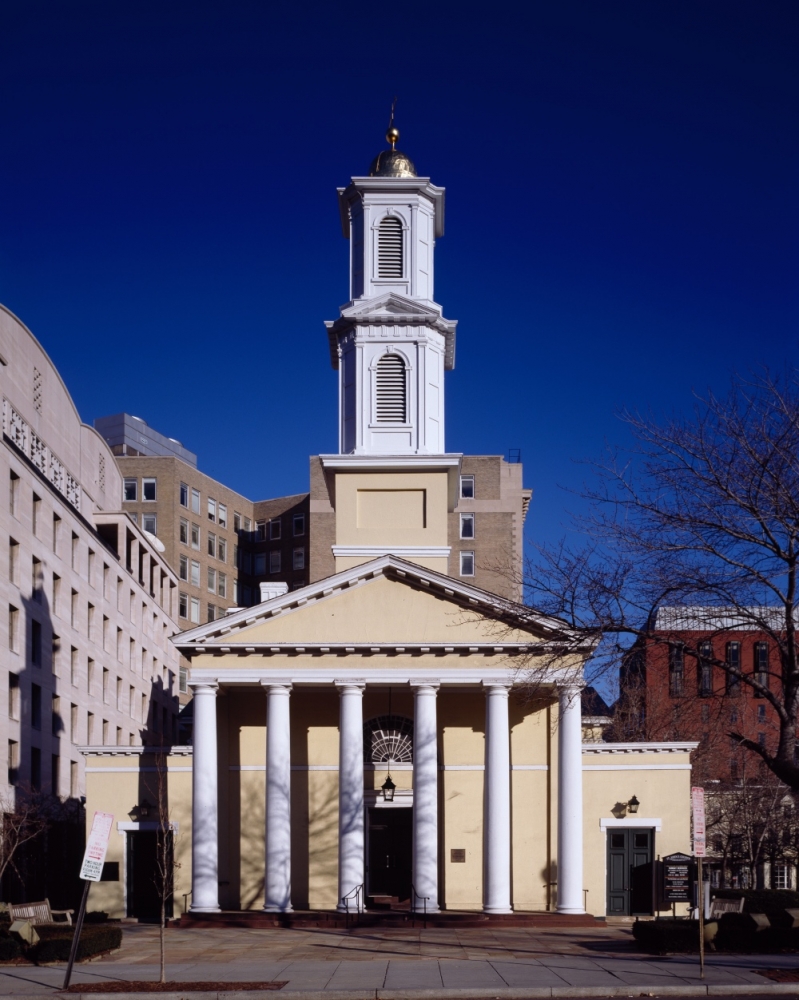
MEAGAN CLARK, of Religion Unplugged, looks at the history of the Washington, DC, church which hit the headlines this week…
After President Donald Trump posed with a Bible on 1st June in front of a boarded-up church near the White House, the church’s rector Rev Robert Fisher said he felt like he’s living in “some alternative universe” while several Republican senators defended the government’s use of police force to clear peaceful protesters from the premises.
Armoured police used tear gas and rubber bullets on the protesters, who organized to condemn racism and police brutality after George Floyd’s death in Minnesota on 25th May. The protesters included at least 20 Episcopal priests and laypeople, according to a report from Religion News Service.
St John’s Episcopal Church, known as the “Church of the Presidents,” had suffered small fire damage in its basement and graffiti during demonstrations over the weekend.
The historic church on H Street near Lafayette Square, a block from the White House, has seen every sitting president inside its walls since James Madison in December, 1816, a few months after the church opened, according to the White House Historical Association.
Here are five facts about St John’s you probably didn’t know:

St John’s Church. PICTURE: Public domain
1. James Madison set the precedent. FDR continued it
The church used to pay its bills by renting pew seats to parishioners. When Madison chose Pew No 18 (now re-numbered to 54), he started a tradition followed by every American president since to worship there at least occasionally. Many presidents have autographed an 18th-century prayer book on display. First Lady Dolly Madison was a historic member of St John’s church, attending often.
Before Franklin D Roosevelt was inaugurated, he asked for a private worship service to be held at St John’s. This set an additional precedent for presidential worship at the church. FDR also held a private inaugural anniversary worship service there on 4th March every year he was president.
2. Abraham Lincoln is thought to have attended more than any other president
Although Lincoln rented a pew at the nearby New York Avenue Presbyterian Church, he would sometimes visit St John’s evening services by slipping into Pew No 89 in the last row and leaving before the congregation to remain unnoticed, according to Rev George Williamson Smith, who led St John’s 1863-64. Dr Smith Pyne was the rector of St John’s for most of Lincoln’s presidency and pledged loyalty to the Union cause despite growing up in South Carolina. Many of Lincoln’s cabinet members also attended as members of the church.
3. The church’s bell was cast by Paul Revere’s son
The bell in St John’s weighs nearly a ton and was cast in 1822 by Joseph Revere in Boston, son of the colonial silversmith and American Revolution Patriot Paul Revere. President James Monroe paid $US100 in public funds for the bell, used as an alarm for the neighbourhood as well as a call to church service.
4. African Americans were baptized and married there from the church’s founding
Rev William Hawley, the second rector of St John’s, baptised and married African Americans in 1817-1845. Many of the marriages took place in his home next to the church and included both free and enslaved people. The same rector married the son of President John Quincy Adams.
5. The church’s architect also designed the White House and Capitol building
Noted architect Benjamin Latrobe oversaw construction of St John’s in 1816. The building is in classical style and meant to resemble the Greek cross, with each arm of the floorplan equal in length. The original interior featured a central pulpit and no columns for an open preaching and meeting space with wider visibility and a feeling of democratic union. Only four years later, the space overflowed with a growing congregation, so one arm was extended, forming a Latin cross.
To learn more, listen to this Library of Congress webcast by Richard Grimmett, or read Grimmett’s book about St John’s.
– JILLIAN CHENEY, a Poynter-Koch fellow for Religion Unplugged, contributed to this report.
Meagan Clark is the managing editor of Religion Unplugged. She previously reported retail and economic news for International Business Times, and human rights and religion stories from India for several outlets like Indian Express, the Wire and Scroll.in. Follow her on Twitter @MeaganKay.





